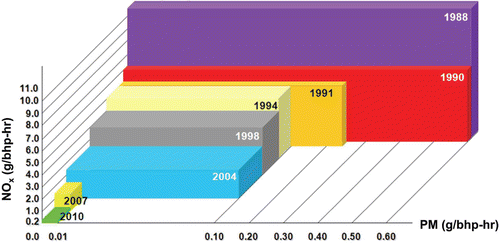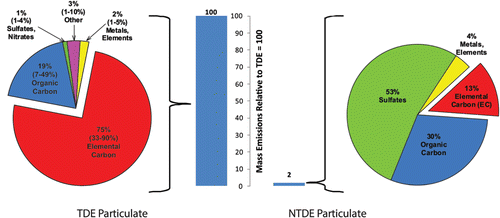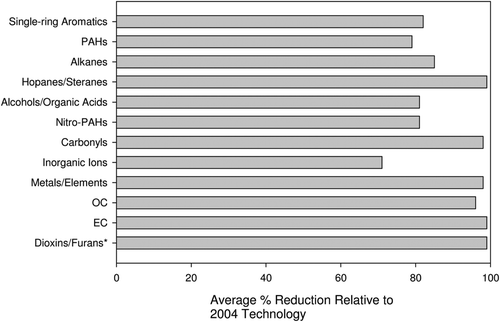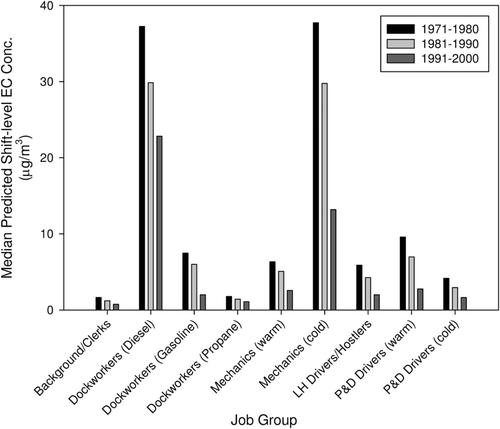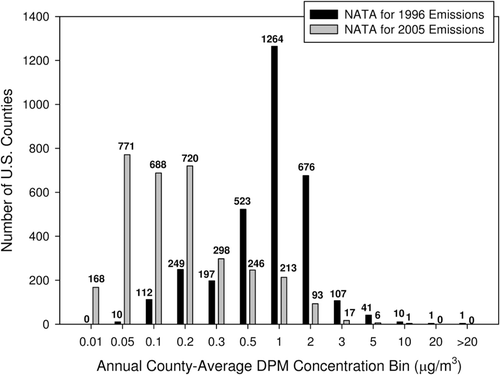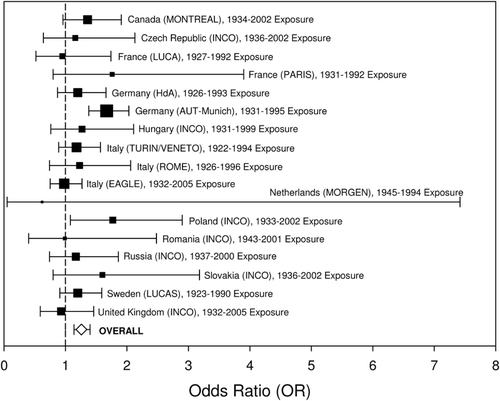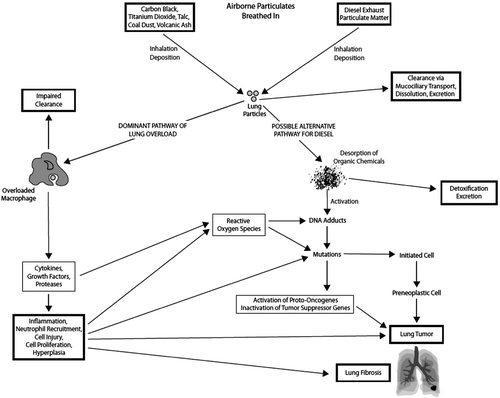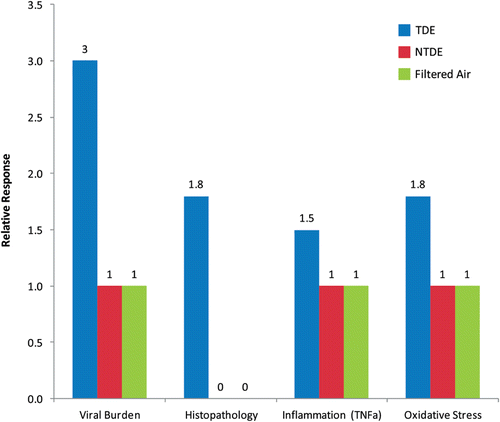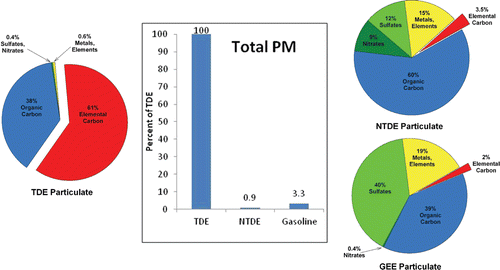Figures & data
Table 1. Key regulatory actions affecting diesel engine exhaust in the United States.
Table 2. Overview of reported exposure levels for DE-exposed worker groups and the general population based on EC measurements and predicted DEP concentrations.
Table 3. Timeline of key DE health effects research milestones.
Table 4. Summary of recent (post-US EPA Diesel HAD, 2001 and later) epidemiological studies of DE-lung cancer risk.
Table 5. Summary of pulmonary effects in different species related to high particle load (from Oberdörster, Citation1995).
Table 6. Summary of DE/DEP hazard assessments conducted by regulatory agencies and authoritative bodies.
